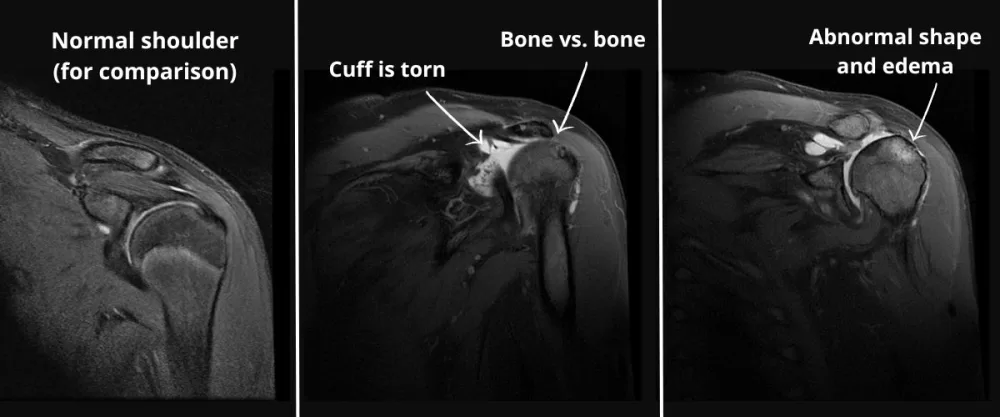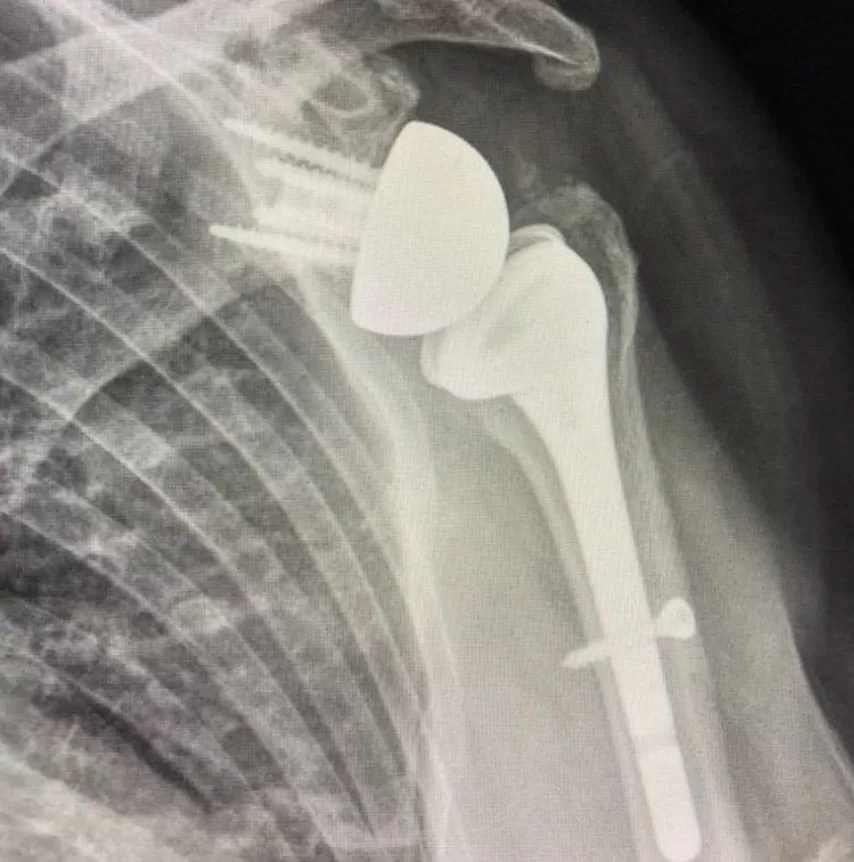We recently saw a case of rotator cuff tear that required surgery. Today, we’re looking at another case, this time with a different treatment.
Our patient today is 71 years old.
He’s been having pain in his shoulder for years.
He can move his arm but he can’t raise it above his head. However, that’s ok for most of his daily activities.
He usually takes painkillers and his doctor recommends physical therapy, to improve his range of motion. However, because the pain wouldn’t go away, he finally sent him for an MRI of his shoulder.
This is an image from his MRI scan:

If we compare it with a normal shoulder, our patient has a rotator cuff tear. Not a simple one, but a massive one. All the estructures of the cuff are gone and have been replaced by fluid.
There’s another consequence. Usually, the cuff surrounds the ball of your shoulder. Now, the ball is “naked” and it has displaced upwards and is rubbing against the acromion bone—bone against bone, not good.
Finally, the “ball” bone has an abnormal shape and edema in it. This all means that it’s an old lesion, probably several years old. And that’s not good when we are thinking about surgery. In these cases, you can’t repair the cuff. The tissues are so weak and torn that trying to stitch them together will do no good, they would tear again instantly.
So, what can be done?
They explained the situation to the patient: surgery could not help him. He would have to go to physical therapy. PT actually improves your range of motion and decreases pain. Because the deltoid muscle is ok, the patient can move his arm quite alright. Of course he won’t be able to lift big weights above his head, but that’s ok unless you are a young athlete.
In these cases, there is only one surgical option you can have: a reverse shoulder replacement, but we only use it if the patient really is in a lot of pain. Otherwise it’s not worth it, because it’s quite aggressive and won’t improve your mobility.

Leave a Reply